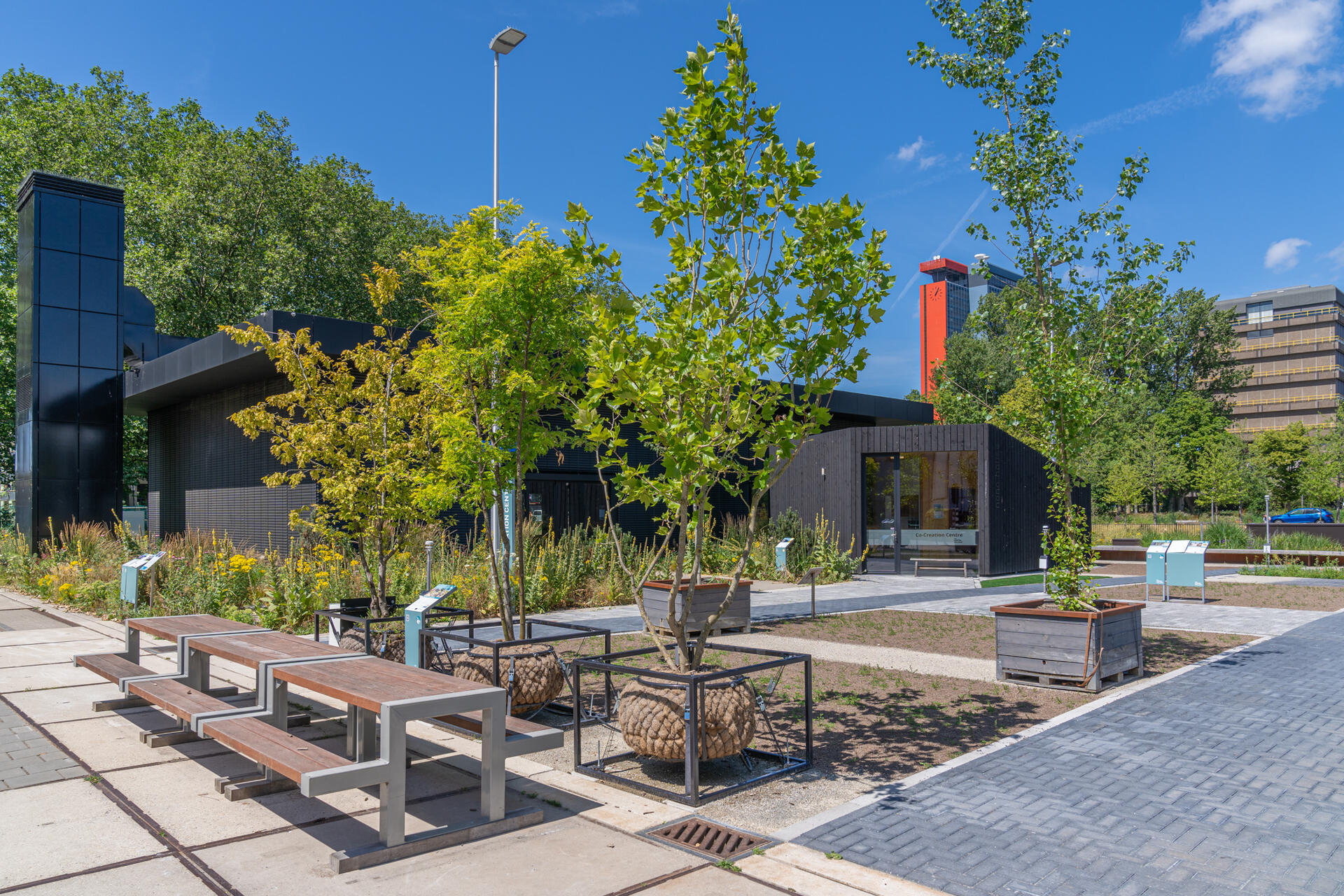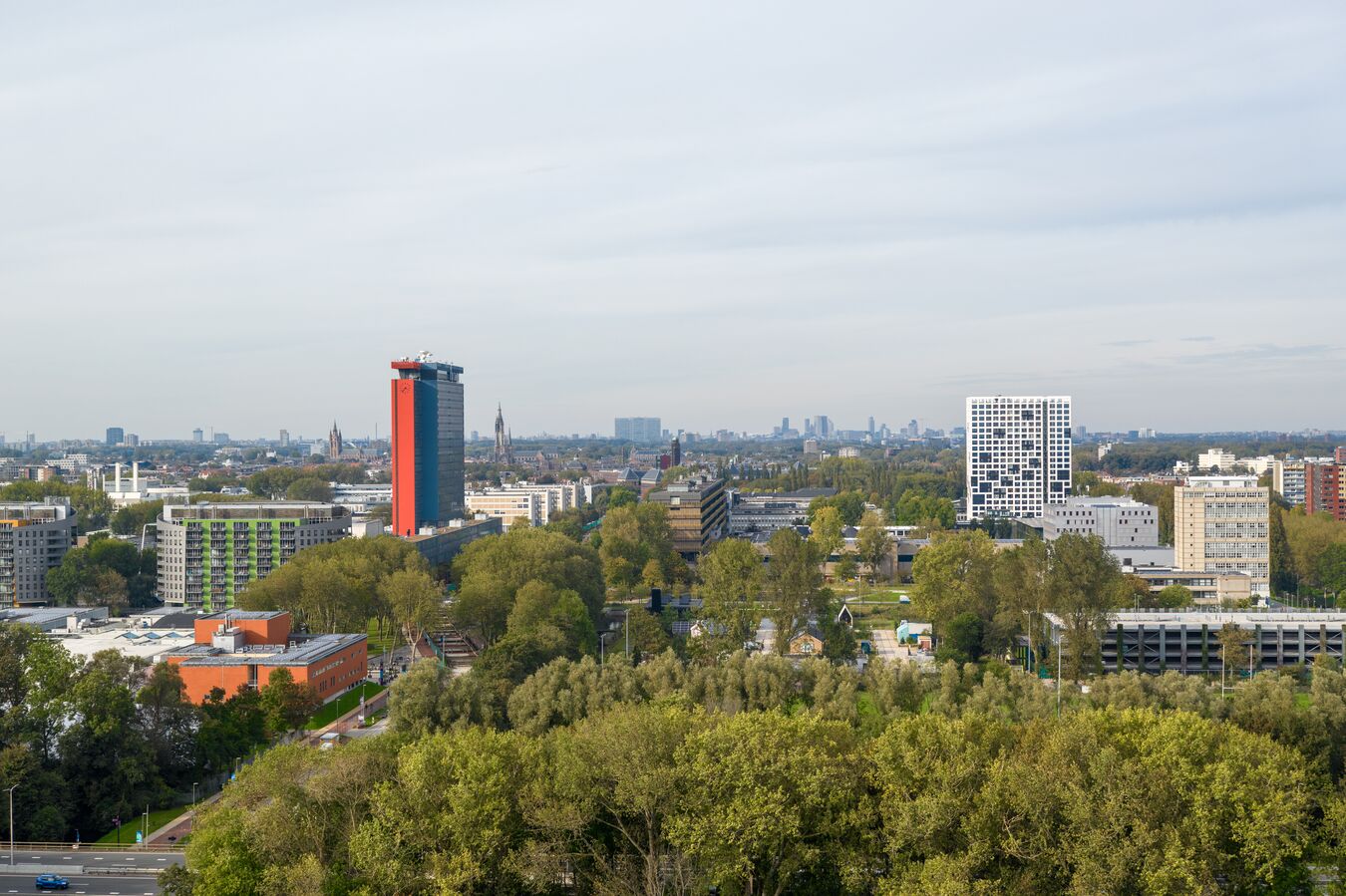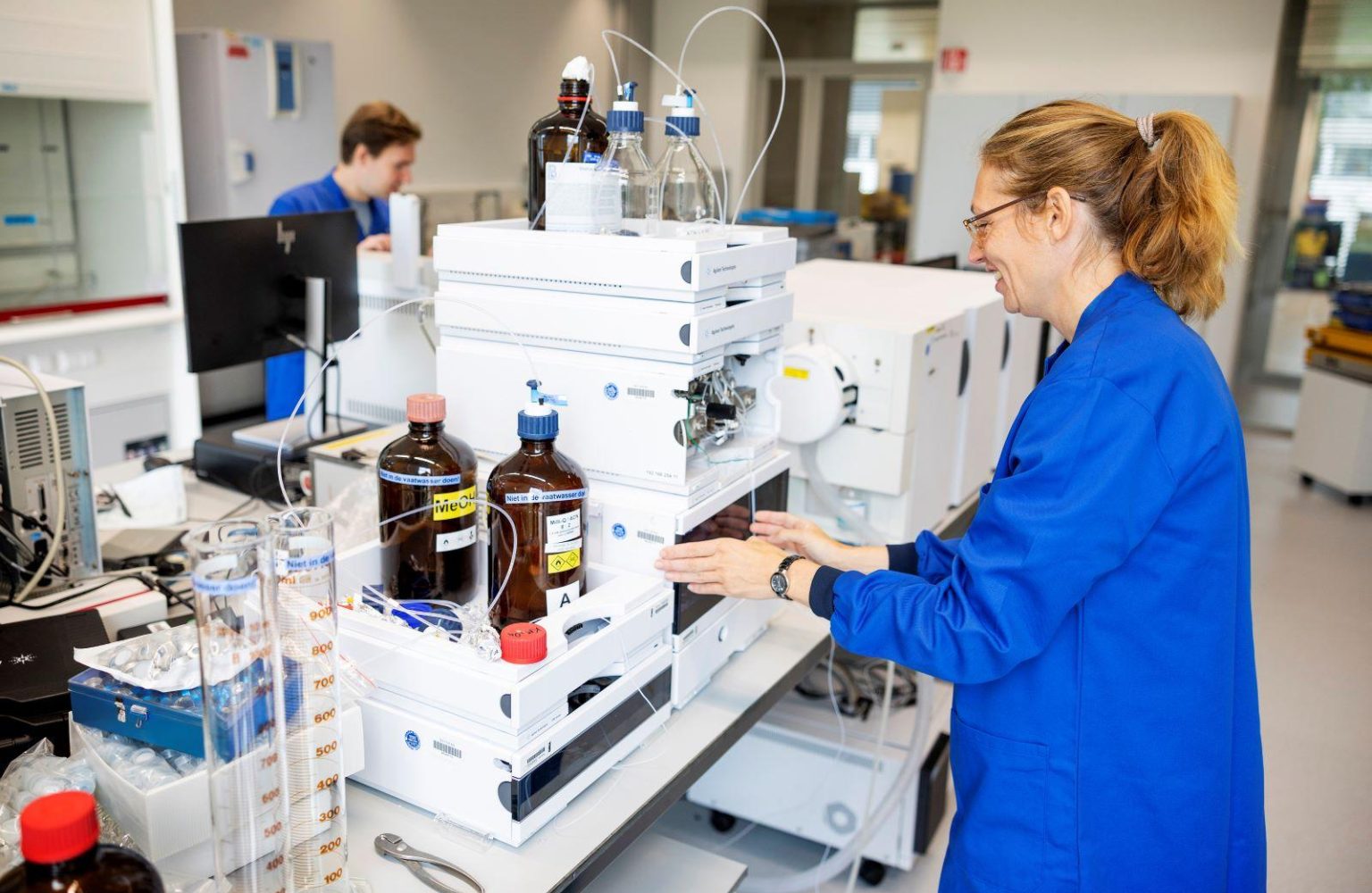TU Delft’s ambition to become CO2-neutral by 2030, requires new approaches and innovation. Hubert Linssen, Programme Manager Sustainable Real Estate and Gert-Jan Pieterse, Project Developer of the new Physics building, both enforce this. Together with TU Delft Alumnus Laurence van Benthem, Architect at Ector Hoogstad Architecten, they initiated a session between master students from the faculty of Architecture and the Built Environment, GreenTU and GreenTeam members of the faculty of Applied Sciences, and several project managers, to review the preliminary design of the new Physics building.
“It is time to engage our students with their campus, to utilise the educational value of our university in the movement towards a sustainable campus and society.” – Hubert Linssen
How to increase the flexibility and the lifespan of the new building?
In 2026 the new Physics building, on the southern part of TU Delft Campus, should be a reality. A project that entails many requirements, demands and challenges. The new building has to accommodate multiple labs while facilitating sufficient study places and workspaces. In line with TU Delft’s ambition, the main focus of the architectural design for this building regarding sustainability, is circularity. In particular: How can we increase the flexibility and the lifespan of the new building and its elements? During the session with students, the design and the trade-offs between sustainability, functionality and safety were presented and reviewed. Students of the master course Circular Product Design (CPD) presented their findings and were able to critically question the current design choices, ensuring they will be in line with the needs of future generations.
“The students gave us insight in multiple circular solutions. One of them, a modular space plan, we will further explore what possibly can be implemented in the design of Physics or other buildings that will arise in the southern part of TU Delft Campus. ” – Gert-Jan Pieterse
Fresh perspective
Adding the student’s fresh perspective to the preliminary design, provided the architect and project managers opportunities to find a new balance between ambitions and certain limitations. Linssen: “Connecting current students in this particular set-up encouraged an open and educational conversation, making it a successful session with many takeaways. The day was concluded with drinks during which the discussions actively continued, demonstrating that engaging students in these type of processes and decisions is valuable and worthwhile.”
“It was a great opportunity to sit at a table with the planners, engineers and architects of the new Physics building and discuss their preliminary design proposal especially focusing on circularity. We challenged their ideas in a fruitful and educational conversation pushing to create more flexibility, modularity and longevity in the design.” – Talal Akkaoui, student Circular Product Design, TU Delft
More about the new Physics Building
The TU Delft Campus is being rejuvenated and improved in the next few years. This development includes the construction of a new Physics building to accommodate those departments of the Faculty of Applied Sciences that are currently housed in Building 22. In addition to state of the art laboratories and teaching facilities, this building will include a future-proof office environment for students, researchers, lecturers, support staff, and businesses visitors.



